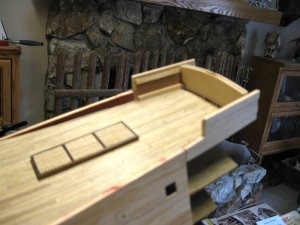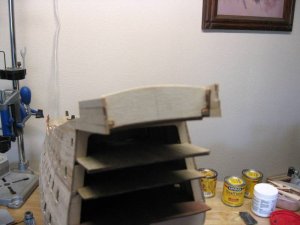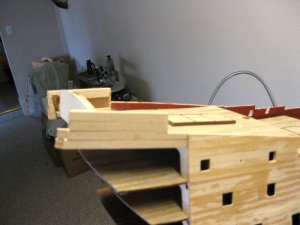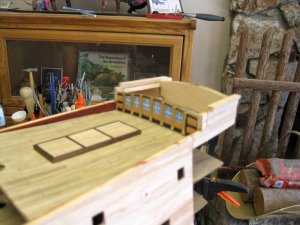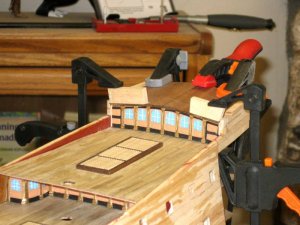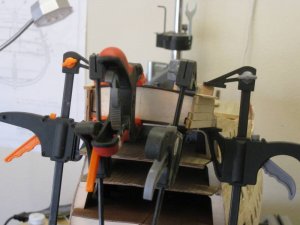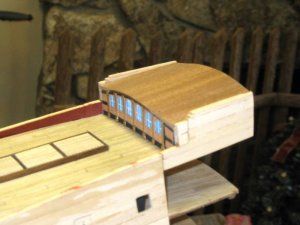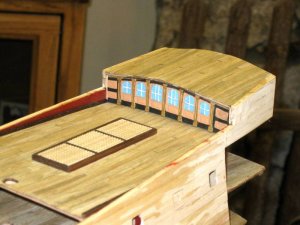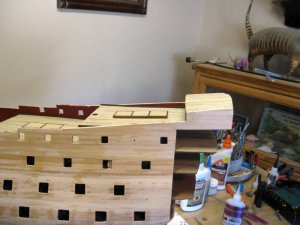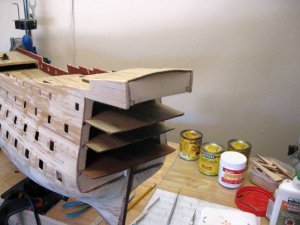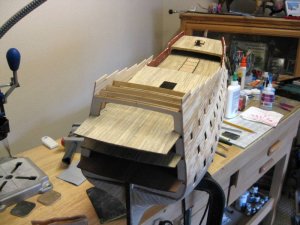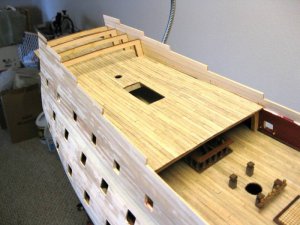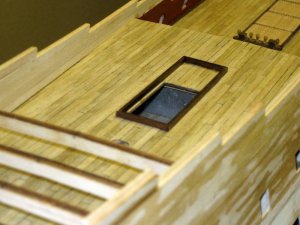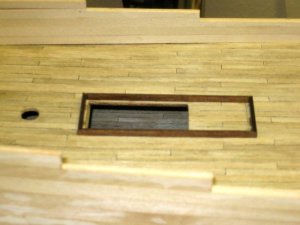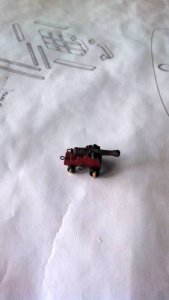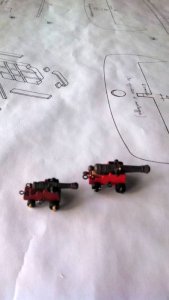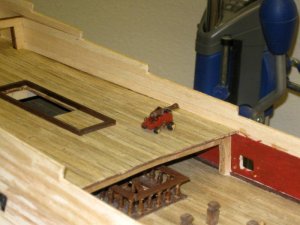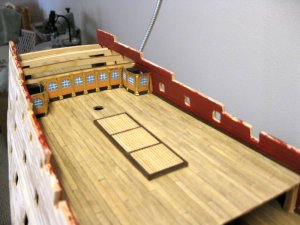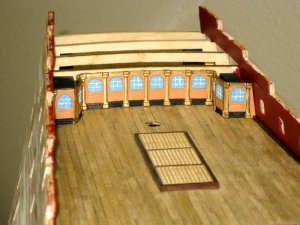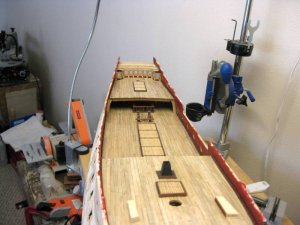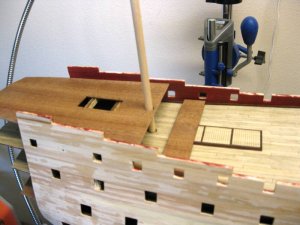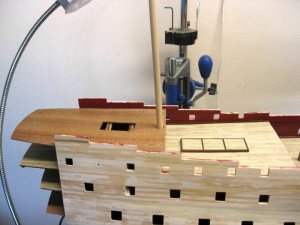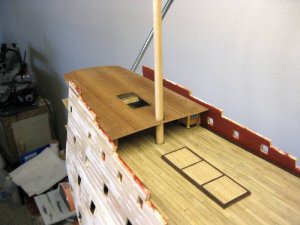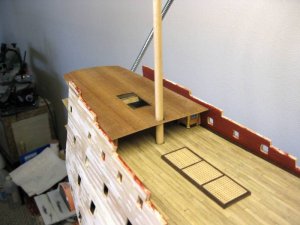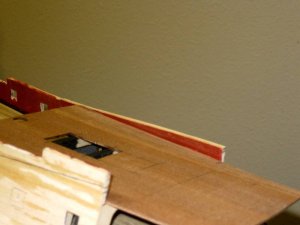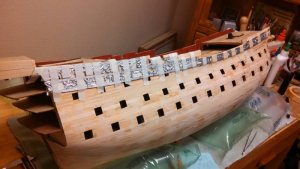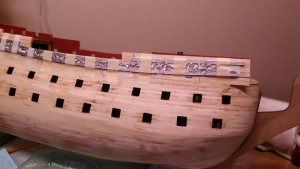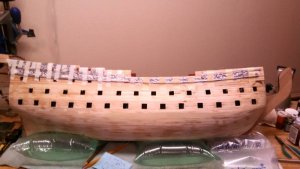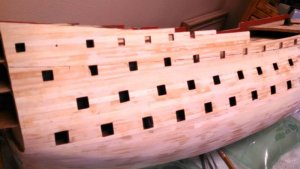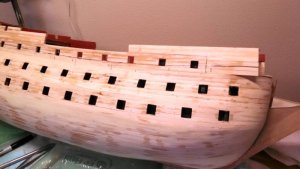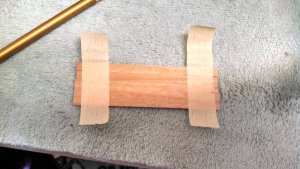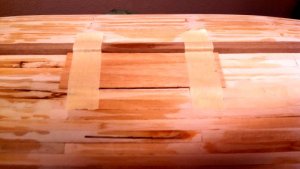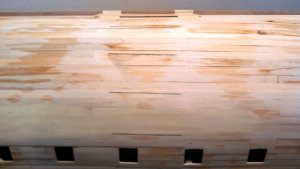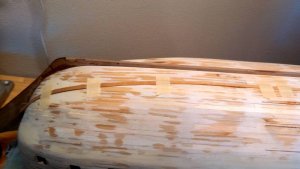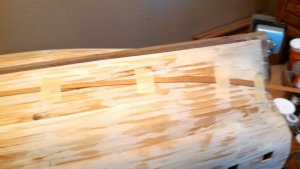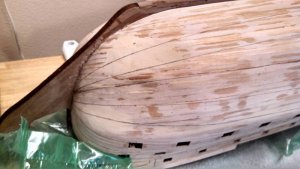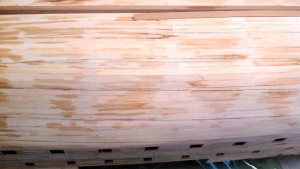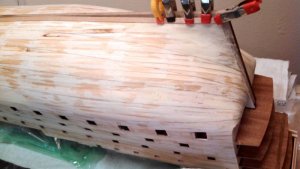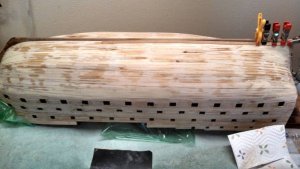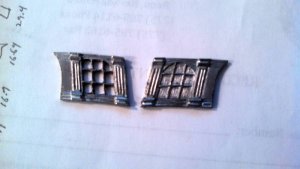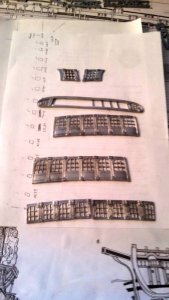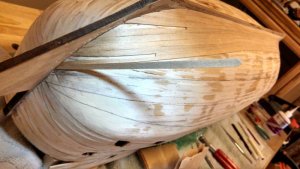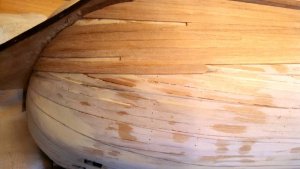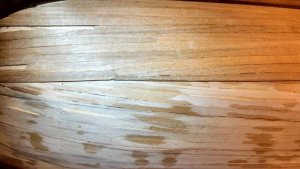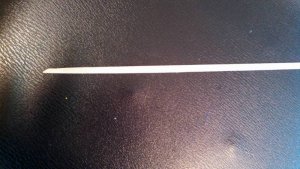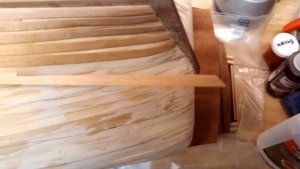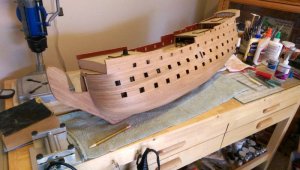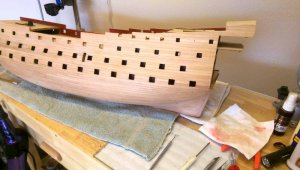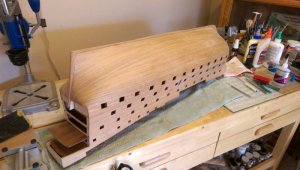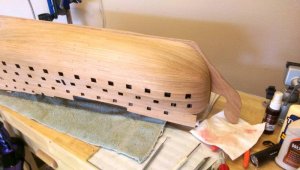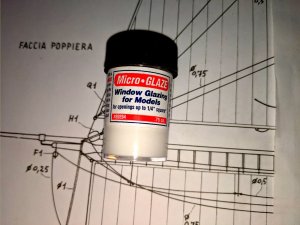Working on and finishing the last deck, the poop deck. This was by far the most difficult part of the build so far. Unlike all of the other decks that are supported by the bulkhead frames, this deck has no real support. The kit comes with 2 small pieces of plywood made from the same wood as the false decks. These are to be glued in a vertical position on the upper quarterdeck to support the poop. That to me was not a satisfactory option, as it offered little support to the deck.
I constructed a bulkhead for the aft end and side supports to link the forward metal bulkhead and aft bulkhead . When I planked the hull at the aft end at the level of the upper quarterdeck and above, I should have extended the planks past the last hull bulkhead by at about 100mm. I cut them off flush with the last bulkhead, which meant I had to extend them aft to support the poop that hangs over the aft edge of the upper quarterdeck for most of its length. Oh well, you live and learn.

The exact horizontal location of the deck, its height from the upper quarterdeck below, the vertical slope, and the camber all required considerable measurements between plan sheets 2 and 17. These sheets do not exactly agree, so a compromise had to be made, and I hope I guessed correctly.
The false deck and the metal forward bulkhead had to be modified considerably in length, height, and shape. Once the false deck was placed on the frame, it had to be bent considerably at both ends to provide the heavy camber and required some serious clamping.
Also on another note: If you are planning on using the larger dimensions for the deck gratings as the plans show and not the smaller sizes as per the cutouts on the decks, you will not have enough grating pieces. There are enough to do the decks, but not to do the quarterdeck overhang and the heads at the bow. More will have to be acquired.
Next up is to prepare the hull for the finish layer of second planking. Since the finish layer is only going up to the bottom edge of the metal hull decorations from bow to stern, all of the pieces have to be placed temporarily in their exact locations to mark the upper boundary for the planking layer.
Vince P.

